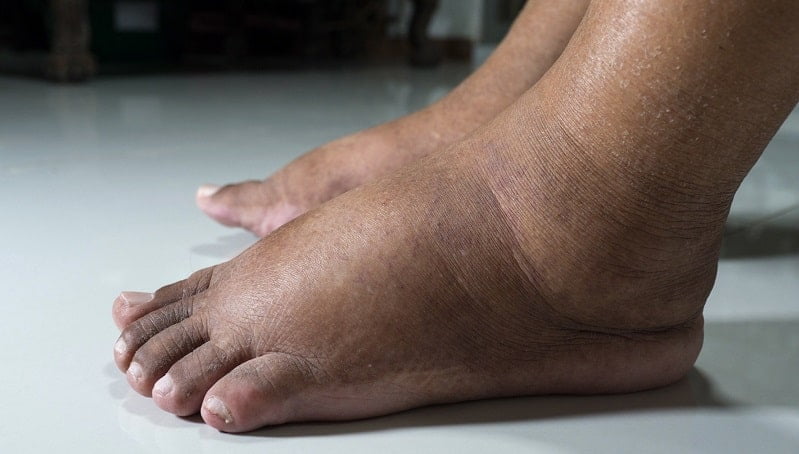Edema occurs when there is too much fluid accumulated in body tissues. This condition can develop in any part of the body. However, it is most common in the feet for individuals with diabetes. The swelling of the feet associated with high blood sugar levels involve the following risk factors:
- Overweight or obesity
- Impaired blood circulation
- Heart diseases
- Kidney infections
- Adverse reactions from medicines
What causes the swelling of the feet?
During diabetes, blood circulation experiences impairment. This is because high levels of sugar block blood vessels. When this happens, excess fluid lingers on different areas of the body. For someone with high blood sugar levels, fluid build-up occurs in the feet.
Besides the build-up of fluid, a foot injury is likely to trigger the swelling. Remember that diabetes prevents wounds from healing faster, which paves the way for weeping legs to happen. Like edema, immediate treatment is a must. Do not wait until the condition worsens. Receiving immediate medical care is essential.
Signs and symptoms of edema
- Rapid weight gain
- Painful limbs
- Joints pain
- Changes in skin color
- Discomfort in the feet or ankle
Treatment
There are several ways to treat this condition. Most of these methods are applicable at home. As you review the following, you will know that these are parts of diabetes management.
- Practice elevating your feet – This is applicable if you sit for long periods. Doing so will lessen the retention of fluid in your feet, preventing episodes of swelling. You can use ottomans or anything that elevates your feet.
- Keep yourself hydrated – While taking in liquid seems to counter your best in preventing fluid retention, drinking water helps a lot in keeping your day mobilized. Note that drinking water every day is what healthcare professionals always recommend.
- Exercise regularly – Individuals with diabetes need to know that exercising prevents obesity. Exercising daily helps in stabilizing blood glucose levels. It also helps your joints function at their best, thereby, preventing swelling.
- Use compression socks – If you are prone to having swollen feet, wearing compression socks is the best idea. These types of clothing impose enough pressure on your feet, thus, improving blood circulation. However, ensure that you don’t wear them too tight.
- Lose some weight – Besides preventing swelling from happening, you will also reduce your risk of developing heart disease as you lose weight. This way, controlling your blood sugar levels is easier and a walk in the park.
- Limit your consumption of salt – Salt is a compound that retains fluid. Since retaining fluid increases your chances of having swollen feet or ankle, cutting off salt intake is a must. You don’t have to worry about any seasoning for your meals. There are a lot of herb varieties to use that are healthier compared to salt.
- Utilize the benefits of Epsom salt – If you do not know yet, an Epsom salt helps minimize swelling of any muscle near the joints. It also alleviates the pain that weeping legs trigger. You can do this home remedy for about 20 minutes.
Takeaway
If home remedies are not enough to treat diabetes swollen feet, visit your healthcare professional immediately. If the swelling worsens, you might need prescriptive medicine to consume regularly. Part of diabetes management is making sure your body does not grow anything that may complicate, especially swelling in some areas. Obtain the necessary medical care and continue with your medications.
Doctor’s Recommendation
While edema is undoubtedly associated with diabetes, there are many casualties of varying concerns. For example, swelling of the feet may result from the aging process and damaged valves in veins or in the context of kidney failure or heart disease. It is imperative that a patient not ignore swollen legs and see proper medical workup including blood work that is required to be able to distinguish the causality and the level of seriousness of the condition.



